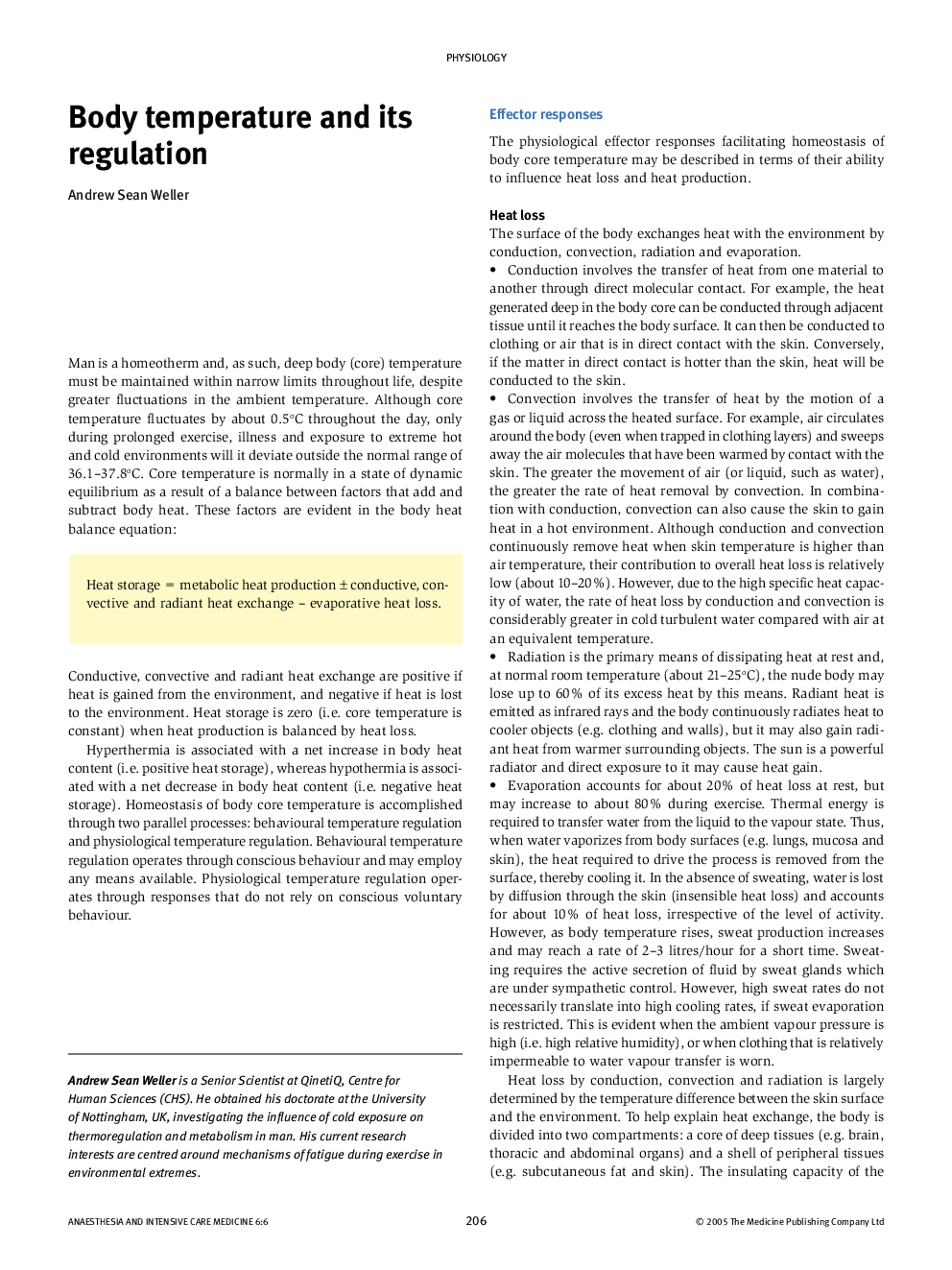| کد مقاله | کد نشریه | سال انتشار | مقاله انگلیسی | نسخه تمام متن |
|---|---|---|---|---|
| 9089884 | 1148727 | 2005 | 4 صفحه PDF | دانلود رایگان |
عنوان انگلیسی مقاله ISI
Body temperature and its regulation
دانلود مقاله + سفارش ترجمه
دانلود مقاله ISI انگلیسی
رایگان برای ایرانیان
کلمات کلیدی
vasoconstriction - انقباض عروقEvaporation - تبخیرThermoreceptors - ترمورسپتورهاThermoregulation - ترموستات یا دستگاه تنظیم حرارتProduction - تولیدHeat - حرارتTemperature - دماPhysiology - فیزیولوژیShivering - لرزMetabolic - متابولیکTransfer - منتقل کردنset point - نقطه تنظیمConduction - هدایتCORE - هستهConvection - همرفتHyperthermia - هیپرترمیHypothalamus - هیپوتالاموسVasodilatation - وادودیتاسیونRadiation - پرتو
موضوعات مرتبط
علوم پزشکی و سلامت
پزشکی و دندانپزشکی
بیهوشی و پزشکی درد
پیش نمایش صفحه اول مقاله

چکیده انگلیسی
Humans must maintain deep-body (core) temperature within narrow limits, despite large fluctuations in ambient temperature and metabolic heat production. Core temperature homeostasis is facilitated by behavioural strategies and physiological effector responses, which influence the factors that add and subtract body heat. Increased skeletal muscle activity (through exercise and shivering) increases core temperature by increasing metabolic heat production. Increased sweat gland activity decreases core temperature by increasing evaporative heat loss. Smooth muscle in the arterioles can dilate to direct blood to the skin for heat transfer by conduction, convection and radiation (vasodilatation), or constrict to retain body heat (vasoconstriction). Metabolic heat production can also be increased by the actions of hormones like thyroxine and the catecholamines. In human thermoregulation, thermoreceptors (peripheral and central) detect changes in skin and core temperature and relay this information to a central controller, the hypothalamus. If there is a mismatch between the reference temperature signal (or set point) and the afferent input, a load error signal is generated resulting in the physiological effector mechanisms to stabilize core temperature. In fever, the set point rises, resulting in the core temperature rising to correct the load error. The hyperthermia of exercise, however, is due to the elevated rate of metabolic heat production resulting in a sustained load error signal. When exercise is terminated, core temperature returns to pre-exercise values. There is no one representative core temperature site, and it is measured at the oesophagus, rectum, mouth, tympanum and auditory meatus. For research purposes, core temperature is best evaluated at the oesophagus and rectum.
ناشر
Database: Elsevier - ScienceDirect (ساینس دایرکت)
Journal: Anaesthesia & Intensive Care Medicine - Volume 6, Issue 6, 1 June 2005, Pages 206-209
Journal: Anaesthesia & Intensive Care Medicine - Volume 6, Issue 6, 1 June 2005, Pages 206-209
نویسندگان
Andrew Sean Weller,